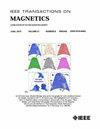Effects of Winding Lorentz Force and Winding Structure on Shunt Reactor Core Vibration
IF 1.9
3区 工程技术
Q3 ENGINEERING, ELECTRICAL & ELECTRONIC
引用次数: 0
Abstract
In previous simulation studies on reactor vibration, the influence of the winding Lorentz force (LF) has not been accurately quantified, and the effect of the winding structure has rarely been considered. This study addresses these gaps by developing a coupled electromagnetic-mechanical simulation model for a shunt reactor, incorporating both the Maxwell forces (MFs) on the core surface and the LFs of the winding. Using this model, the magnetic flux density and force distributions of the core and winding were compared, and the impacts of the winding LF and winding structure on core vibration were systematically analyzed. The results demonstrate that the MFs on the core surface are markedly larger than the LFs of the winding. The winding LF has a negligible influence on core displacement and vibration amplitude, with relative errors of less than 2% when the LF is excluded from the model. In contrast, while the winding structure has a minimal effect on the peak displacement of the core, it notably affects the vibration amplitude, particularly at the frequency of 100 Hz. Modal analysis further reveals that the absence of the winding structure leads to a substantial reduction in the core’s axial natural frequency. This highlights the winding structure as a critical factor in reactor vibration simulations. The findings of this study provide valuable insights for advancing reactor vibration analysis and control strategies while also highlighting the critical importance of accurately modeling both electromagnetic and structural interactions in future research.绕组洛伦兹力和绕组结构对并联电抗器芯振动的影响
在以往的反应器振动仿真研究中,缠绕洛伦兹力(LF)的影响没有得到准确的量化,且缠绕结构的影响很少被考虑。本研究通过开发一个并联电抗器的耦合电磁-机械仿真模型来解决这些空白,该模型结合了铁心表面的麦克斯韦力(MFs)和绕组的LFs。利用该模型比较了铁芯和绕组的磁通密度和力分布,系统分析了绕组LF和绕组结构对铁芯振动的影响。结果表明,绕组磁芯表面的磁流变场明显大于绕组的低场。绕组LF对铁芯位移和振动幅值的影响可以忽略不计,在模型中不考虑LF时,相对误差小于2%。相比之下,绕组结构对磁芯峰值位移的影响很小,但对振动幅值的影响明显,特别是在100hz频率下。模态分析进一步表明,绕组结构的缺失导致磁芯轴向固有频率的大幅降低。这突出了绕组结构在反应堆振动模拟中的关键作用。这项研究的发现为推进反应堆振动分析和控制策略提供了有价值的见解,同时也强调了在未来研究中准确建模电磁和结构相互作用的重要性。
本文章由计算机程序翻译,如有差异,请以英文原文为准。
求助全文
约1分钟内获得全文
求助全文
来源期刊

IEEE Transactions on Magnetics
工程技术-工程:电子与电气
CiteScore
4.00
自引率
14.30%
发文量
565
审稿时长
4.1 months
期刊介绍:
Science and technology related to the basic physics and engineering of magnetism, magnetic materials, applied magnetics, magnetic devices, and magnetic data storage. The IEEE Transactions on Magnetics publishes scholarly articles of archival value as well as tutorial expositions and critical reviews of classical subjects and topics of current interest.
 求助内容:
求助内容: 应助结果提醒方式:
应助结果提醒方式:


